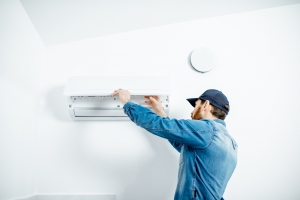In today's busy world, finding ways to relax and improve your health is more important than ever. Many people are looking for simple methods to de-stress after long workdays. One of the most popular methods for relaxation and recovery is using a sauna. However, you cannot just sit in the heat randomly and expect results. You need a structured plan. In this guide, we will explore how to create the perfect at-home sauna routine and provide tips for getting the best experience.
Understanding the Basics: What is a Sauna?
Before diving into the routine, it is essential to understand what a sauna is. A sauna is a small room or space designed to experience dry or wet heat sessions. The heat makes you sweat, which helps your body release toxins and relax your muscles.
There are two main types of saunas:
Traditional Saunas: Use heated rocks or stoves to warm the air. Temperatures range from 150°F to 195°F.
Infrared Saunas: Use infrared light to heat your body directly. Temperatures range from 120°F to 140°F.
Both types offer health benefits, but the experience is different. Traditional saunas are hotter and make you sweat more quickly. Infrared saunas are gentler and may be better for beginners.
Why You Need a Routine
Just like cooking requires precise measurements for the best results, using a sauna requires a precise approach. Many people make the mistake of using a sauna once in a while without any plan. This does not give you the full benefits.
Consistency is the key to seeing real changes in your sleep quality, skin health, and muscle recovery. A casual session once a month might feel good, but a dedicated at-home sauna routine is what transforms your overall health and wellness.
When you follow a structured routine, your body adapts to the heat therapy. You will sleep better, recover faster from workouts, and feel less stressed throughout the day.
Step-by-Step Guide to Your Sauna Session
To create a safe and effective routine, you need to follow specific steps each time you use your sauna. Here is a breakdown of how to structure your session for maximum benefits:
- Preparation (Pre-Sauna)
Preparation is the most important part of the process. Your body needs to be ready for heat exposure.
Hydration: Drink at least 12–16 oz of water before entering the sauna. This helps replace the fluids you will lose through sweating.
Remove Oils and Lotions: Take a quick shower to wash away any lotions, oils, or creams from your skin. This allows your pores to open properly and helps you sweat more effectively.
Eat Lightly: Avoid eating a heavy meal right before your session. A light snack 1–2 hours before is fine.
Set the Temperature: Turn on your sauna 10–15 minutes before use so it reaches the right temperature.
- The Session (Time and Temperature)
Once you enter the sauna, timing is everything. Using the sauna for too long can cause dehydration or dizziness.
For Beginners: Start with 10–15 minutes per session. Your body needs time to adjust to the heat.
For Regular Users: After a few weeks, you can extend your sessions to 20–30 minutes.
Traditional Saunas: Usually run between 150°F and 195°F. The higher temperature makes you sweat quickly.
Infrared Saunas: Operate at lower temperatures between 120°F and 140°F. The heat penetrates deeper into your muscles.
Listen to Your Body: If you feel dizzy, lightheaded, or uncomfortable, exit the sauna immediately. Do not push yourself too hard.
- The Cool Down (Post-Sauna)
The cool-down phase is just as important as the session itself. This is when your body begins to recover.
Natural Cooling: After exiting, sit or lie down for 10–15 minutes. Let your body temperature return to normal naturally.
Cold Shower: Some people prefer to take a cold shower immediately after. This helps close your pores and can improve circulation.
Rehydration: Drink another 16–20 oz of water or an electrolyte drink. You lost a lot of fluids during sweating, so replacing them is critical.
Rest: Give yourself at least 30 minutes of rest before resuming normal activities.
How Often Should You Use Your Sauna?
Many people wonder how many times per week they should use their sauna. The answer depends on your goals and experience level.
Beginners: Start with 2–3 sessions per week. This gives your body time to adapt.
Regular Users: You can increase to 4–5 sessions per week once you are comfortable with the heat.
Advanced Users: Some people use their sauna daily. However, make sure you are drinking enough water and listening to your body.
Consistency is more important than frequency. It is better to do 3 well-structured sessions per week than 7 rushed sessions.
Health Benefits of a Regular Sauna Routine
In general, heat therapy has been used for centuries around the world. Just as healthy food fuels your body, regular heat therapy helps your body recover and perform better. Including sauna sessions in your weekly schedule brings multiple benefits to your overall health:
Improved Sleep Quality
One of the biggest benefits of regular sauna use is better sleep. The drop in body temperature after a sauna session signals your brain that it is time to rest. This mimics the natural cooling process your body goes through before falling asleep. Many users report falling asleep faster and sleeping more deeply after evening sauna sessions.
Detoxification Through Sweating
Sweating is your body's natural way of removing toxins. During a sauna session, you can sweat out impurities like heavy metals, chemicals, and other waste products. While your kidneys and liver do most of the detox work, sweating provides an additional pathway for your body to cleanse itself.
Muscle Recovery and Pain Relief
Heat therapy increases blood circulation throughout your body. This brings more oxygen and nutrients to your muscles, which helps repair tissue damage after workouts. Athletes often use saunas to speed up recovery time and reduce muscle soreness. Heat also helps relax tight muscles and can provide relief from chronic pain conditions.
Stress Relief and Mental Health
A sauna provides a quiet space where you can disconnect from digital screens, work stress, and daily responsibilities. The heat triggers the release of endorphins, which are your body's natural feel-good chemicals. Regular sauna use can help reduce anxiety and improve your overall mood.
Cardiovascular Health
Your heart rate increases during a sauna session, similar to moderate exercise. This can improve your cardiovascular function over time. Some studies suggest that regular sauna use may help lower blood pressure and reduce the risk of heart-related conditions.
Tips for Creating Your Sauna Space at Home
You might think you need a large mansion or expensive renovation to have a sauna at home. That is not true. Modern technology has made it easier than ever to fit wellness tools into small spaces. Here are some tips for setting up your home sauna:
Measure Your Available Space
Just like measuring ingredients for a recipe, you need to measure your available floor space accurately. Most home saunas require at least 3 feet by 4 feet of floor space. Measure twice before you purchase any equipment.
Common locations for home saunas include:
- Basement corners
- Spare bedrooms
- Large bathrooms
- Garage spaces
- Outdoor patios (for weather-resistant models)
Choose the Right Type for Your Needs
Decide between infrared or traditional steam based on your tolerance for heat and your health goals.
Infrared Saunas: Better for beginners, require less electricity, and are easier to install. They heat your body directly rather than heating the air.
Traditional Saunas: Provide a more intense experience with higher temperatures. They require more power and may need special electrical wiring.
Ensure Proper Ventilation
Your sauna space needs good airflow to prevent moisture buildup and maintain air quality. Make sure the room has proper ventilation or install a small fan. Poor ventilation can lead to mold growth and uncomfortable conditions.
Consider Electrical Requirements
Some saunas plug into standard outlets (110V), while others require special 220V circuits. Check the electrical requirements before purchasing. You may need to hire an electrician to install the proper wiring.
Add Comfort Features
To make your sauna experience more enjoyable, consider adding:
- A comfortable bench or seat with a towel
- A timer to track your sessions
- Soft lighting or a reading light
- A small speaker for relaxing music
- Essential oil diffusers (only in traditional saunas)
Common Mistakes to Avoid
Using a sauna seems simple, but many people make mistakes that can reduce the benefits or even cause harm. Here are common errors to avoid:
Dehydration
The most common mistake is not drinking enough water before and after your session. Dehydration can cause dizziness, headaches, and exhaustion. Always drink water before entering and immediately after exiting.
Staying Too Long
Some people think more time equals better results. This is not true. Overheating can be dangerous and cause heat exhaustion. Always follow the recommended time limits and listen to your body.
Drinking Alcohol Before or During
Never consume alcohol before or during a sauna session. Alcohol dehydrates your body and impairs your judgment. This combination with high heat can be extremely dangerous and has caused serious health emergencies.
Using the Sauna While Sick
If you have a fever, infection, or are feeling unwell, skip your sauna session. The additional stress on your body can make your condition worse.
Not Showering First
Entering the sauna with lotions, makeup, or oils on your skin blocks your pores and prevents effective sweating. Always shower before your session.
Wearing Too Much Clothing
Some people wear heavy clothing or wraps in the sauna. This prevents heat from reaching your skin and reduces the effectiveness of the session. Wear minimal, loose clothing or just a towel.
Tracking Your Progress
To get the most from your routine, track your sessions and how you feel afterward. Keep a simple journal with the following information:
- Date and time of session
- Duration (how many minutes)
- Temperature setting
- How you felt during and after
- Sleep quality that night
- Energy levels the next day
After a few weeks, you will start to see patterns. This helps you adjust your routine for better results.
Understanding the Science Behind Heat Therapy
Heat therapy has been studied extensively by researchers around the world. When you expose your body to high temperatures, several physiological changes occur:
Increased Heart Rate: Your heart rate can increase by 30% or more, similar to moderate exercise.
Improved Circulation: Blood vessels dilate, which improves blood flow throughout your body.
Sweating Response: Your body activates its cooling system, which helps eliminate waste products.
Hormonal Changes: Heat exposure can trigger the release of beneficial hormones like growth hormone and endorphins.
These changes work together to provide the health benefits mentioned earlier in this guide.
Who Should Avoid Sauna Use?
While saunas are safe for most people, certain individuals should consult a doctor before starting a routine:
- Pregnant women
- People with uncontrolled high blood pressure
- Individuals with heart conditions
- Anyone with kidney disease
- People taking medications that affect sweating or heart rate
If you have any health concerns, always check with your healthcare provider before beginning regular sauna sessions.
Making Sauna Time Part of Your Day
The best way to maintain a consistent routine is to schedule your sessions like any other important appointment. Here are some tips:
Morning Sessions: Can help wake you up and energize you for the day. Schedule 30 minutes before your morning shower.
Evening Sessions: Perfect for relaxation and preparing your body for sleep. Plan your session 1–2 hours before bedtime.
Post-Workout: Many people use the sauna after exercise for enhanced recovery. Wait 10–15 minutes after your workout to let your heart rate normalize first.
Weekend Rituals: If weekday scheduling is difficult, make your sauna time part of your weekend self-care routine.
Conclusion
In conclusion, creating an effective at-home sauna routine is one of the best investments you can make in your health and wellness. Understanding how to structure your session properly can help you achieve the desired results in sleep quality, stress reduction, and muscle recovery.
Remember these key points:
- Always hydrate before and after your session
- Start with shorter sessions and gradually increase time
- Listen to your body and exit if you feel uncomfortable
- Maintain consistency with 2–3 sessions per week minimum
- Measure your space carefully before purchasing equipment
- Avoid common mistakes like alcohol consumption and overheating
By following the guidelines in this article, you can turn a simple corner of your house into a personal wellness center. A structured at-home sauna routine is not just about relaxation—it is about taking control of your health and making a commitment to long-term wellness.
For more information on home wellness solutions and healthy living tips, explore other articles on this site to continue your journey toward better health.






